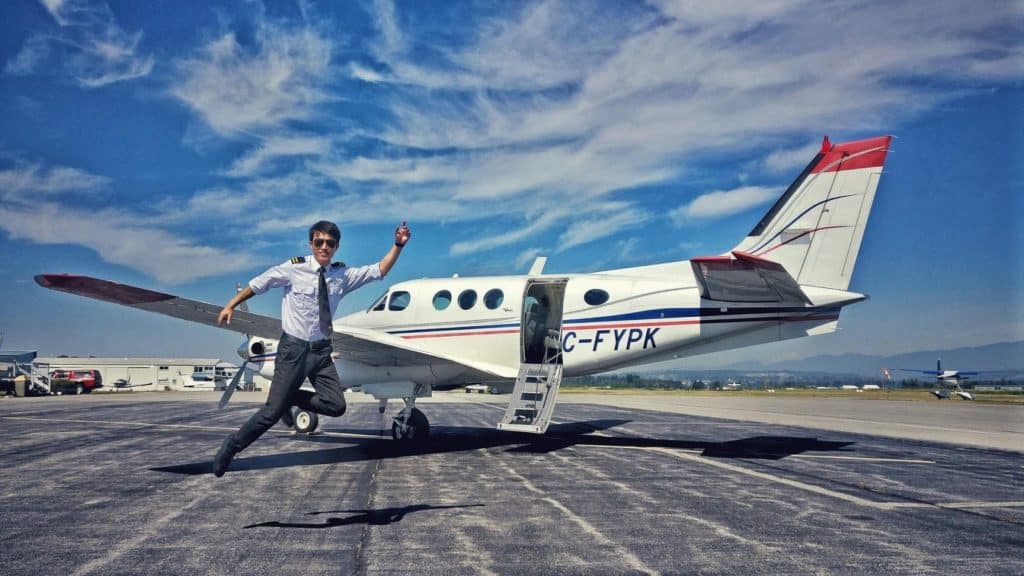What Happens During a Student’s Solo Flight in Commercial Pilot School
To learn more about becoming a student pilot, call us at Leopard Aviation at 480-637-4217.
All student pilots undergo extensive flight training that involves learning the airspace rules, departure procedures, emergency procedures, and much more. This is essential to earn a commercial pilot license in Arizona and launch a career in aviation.
At some point during their training, every student pilot must demonstrate satisfactory aeronautical knowledge by flying solo.
Student pilots operating their aircraft alone is intense, but this guide reveals everything that happens during the student pilot’s first solo flight.
The Basics of Becoming a Pilot: What Happens Before the Solo Flight
Before we dive into what to expect during a first solo flight, let’s cover the basics of how to become a pilot.
You’ll need to work with a certified flight instructor to complete ground training and learn the many procedures required before you can log flight time.
During your pre-solo flight training, you can expect to learn the following flight tactics and procedures:
- Low drag configurations
- Stall entries
- Emergency procedures
- Collision avoidance
- Surface operations
- Power combinations
Part of your pre-solo flight training involves taking a written exam on your aeronautical knowledge. Only after you’ve demonstrated satisfactory proficiency on this topic can you receive solo flight privileges and be the sole occupant of your aircraft.
Too many incorrect answers on this exam will prevent you from earning your instructor’s endorsement to fly solo. If you fail the written test, you can review information regarding various flight attitudes, ground reference maneuvers, and simulated engine malfunctions, then retake the test.
If you’re anxious to start receiving training, Leopard Aviation is ready to help you begin your journey. Reach out to our staff today to learn more about our program with flight schools at Scottsdale and Mesa/Falcon field airports.
Planning the Solo Flight
Preflight planning is crucial before heading up in the air on a solo flight. The student needs to take into account the traffic pattern, evaluate the conditions for their takeoffs and landings, and prepare for any equipment malfunctions.
Along with their flight instructor, the pilot-in-training will go over certain operational limitations, such as the weather and visibility.
Before the first solo flight, the student pilot should be well-versed in navigation training and know the procedures prescribed for wake turbulence avoidance. However, instructors will typically select a fair-weather day with good visibility to allow for a level flight.
Rack Up In-Flight Training Hours on Preliminary Flights with an Instructor
After the student pilot’s logbook contains enough in-flight training hours with their instructor, they are ready to fly their aircraft solo.
On the day of the first solo flight, the instructor will likely ask that the student performs some preliminary takeoffs and landings with them joining the flight. The instructor will assess how the student pilot handles this initial run before officially signing the student’s logbook and endorsing them to fly solo.
As long as the endorsement remains current, the student pilot can navigate their aircraft on their own. The first flight may come with some imperfections, but the pilot can take this experience and build on it for future flights.
Expect Some In-Flight Limitations for the Student Pilot’s First Solo Flight
On a student pilot’s first solo flight, there will be some limitations, mainly the airspace. It will likely be a short, slow flight that stays around the flight school so the pilot can avoid the busier traffic patterns of major airports.
Earning a commercial pilot’s license will require further training in these high-traffic areas, but for the first time piloting a plane solo, the student must stay out of commercial airspace.
Land and Learn for Future Solo Flights
Assuming all flight characteristics go well with the flight, the student can land the plane and earn congratulations from their instructor for achieving this milestone. However, this is still plenty of hours that the aspiring pilot needs to log on their own to attain their private pilot’s license and, eventually, their commercial license.
After completing the initial solo flight, the student can take pride in their accomplishment but also use it as a learning opportunity. If anything happened that they weren’t prepared for, they need to gear up and use that experience to improve their next flight.
This is a major step in becoming a professional pilot, so enjoy it and always look forward to making the next flight even better.
Begin Your Flight Training As a Student Pilot by Enrolling in Flight School Today
Do you dream of flying for a commercial airline? Leopard Aviation will prepare you for the task and teach you everything you need to know before your first solo flight.
Our authorized flight instructors will teach you everything from traffic patterns to proper flight preparation procedures to recovery initiation.
Choosing the best flight school is key for increasing every student pilot’s knowledge of their aircraft. If you’re ready to begin student pilot training, Leopard Aviation is here to help.
Call 480-637-4217 to take the first step towards becoming a commercial pilot at our flight program with flight schools at Scottsdale and Mesa/Mesa/Falcon field airports.

